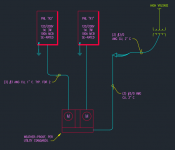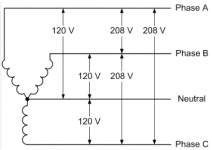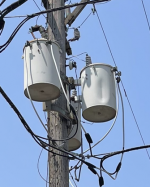Volt-Amps
Member
- Location
- Indianapolis
Hello, Forum Experts. I have a few questions I need help with, your help is much appreciated:
Question #1
(2) 100A residential meters next to each other sharing 3/0 feed from utility. The main disconnect is located inside each panel in the respective dwelling unit upstairs. With the service ground being required at the main service disconnect, should the service ground be:
What rules describe grounding of the meter enclosure. I know it has to be grounded as well.
Question #3
When are ground rods required and how is the number of ground rods determined? Do I need ground rods here?

Question #1
(2) 100A residential meters next to each other sharing 3/0 feed from utility. The main disconnect is located inside each panel in the respective dwelling unit upstairs. With the service ground being required at the main service disconnect, should the service ground be:
- One service ground, at the 2-meter enclosure, #4 CU for the 200A service that feeds both panels.
- Two service grounds, one for each panel, #4 CU, or
- One #8 for 100A each panel. (I would pick this one, but need experts advice)
What rules describe grounding of the meter enclosure. I know it has to be grounded as well.
Question #3
When are ground rods required and how is the number of ground rods determined? Do I need ground rods here?




